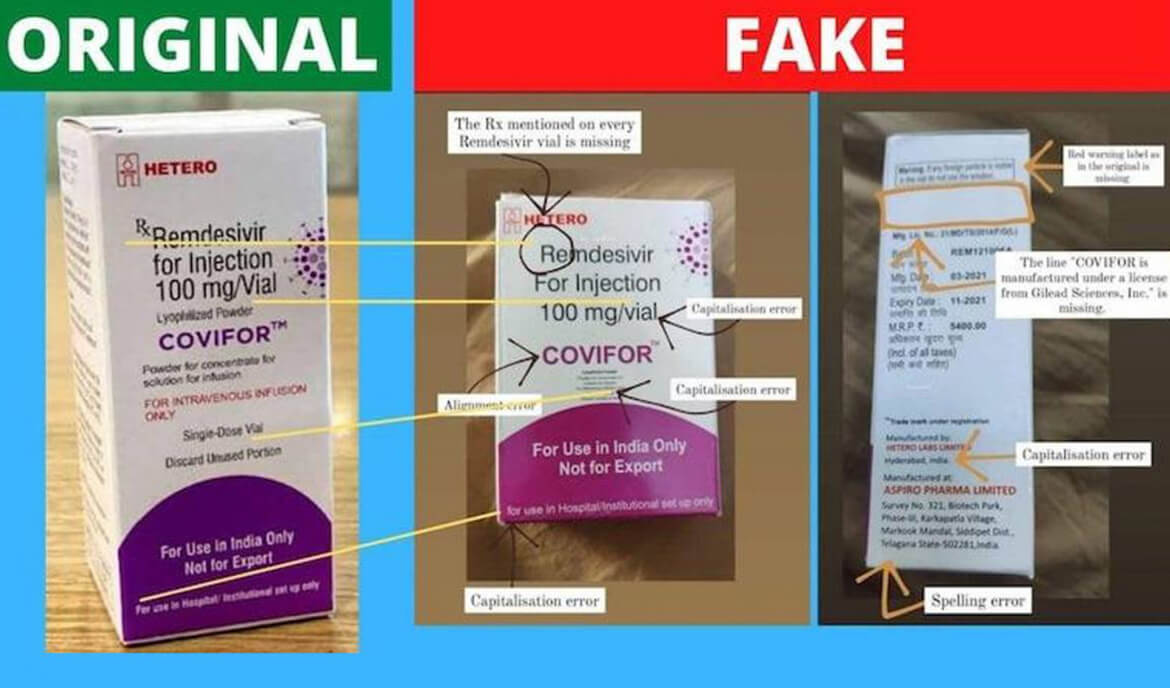How to identify and fight unauthorized sellers on Ecommerce
Nike is suing 589 websites, the owners of 676 social media accounts and more than 100 unidentified companies and individuals for allegedly selling counterfeit versions of its Nike and Converse shoes online.
According to the World Customs Organization (WCO), 7-9 per cent of global trade consists of counterfeit products and more than 70% of counterfeit products are purchased from online marketplaces. This is a shocking number and makes us second guess all our online purchases and creates a need for product authentication.
The statistics are alarming not only for online trade, but also for offline retail as well with no way for a consumer to identify official distributors, product differentiators and content of the product. As India battles Covid-19 with the shortage of oxygen, ventilators and medicine, counterfeiters have flooded the market with fake Remdesivir that is being purchased by desperate patients and family members. This is also due to the heavy dependency on a legal framework, which only comes into action once a counterfeiter is identified and caught.

Trying to distinguish between counterfeit and authentic products from an online ad can be pretty difficult. After all, counterfeiters go the extra mile to ensure they look legit, complete with the original brand’s logo. Unless one is very familiar with the legitimate brand, the chances of spotting fakes from ads and images is slim. Nevertheless, taking concrete steps for product authentication and to protect a brand’s reputation when advertised online is extremely important. As seen from the above image, it is hard if not impossible for the common person to even tell the difference between original and fake products once the product is in the hands of the consumer. It takes a trained eye to spot the difference and consumers need a simple way to be able to tell the difference. Rarely companies invest into anti-counterfeiting solutions which may help their consumers.

Brands in an attempt to safeguard their products against counterfeiters have started to invest in developing strategies and implement the same across their supply chain network.

Packaging innovation
Several brands have tried to differentiate by using distinct visual markers that are unique to their product for consumer identification and act as anti-counterfeiting solution. This can be
- Invisible Printing
- Embedded Image/ Holograms
- Digital Watermarks
- Hidden Marks
- Digital ID’s and Smart Packaging Solutions
This is done for the company to recognize the authenticity in case of any conflict.
Product Traceability
Closely monitoring the distribution network and securing the supply chain across wholesalers to stockists to retailers is required to avoid infiltration of counterfeit products. Basic track and trace can be achieved by traditional methods such as batch coding. However, serialization or smart digital IDs on each SKU or product is required to truly achieve product traceability across the supply chain. RFID or NFC tags can also be used for visibility into real time inventory movement in the supply chain.
Amazon fulfillment in the UK has addressed this issue and has made transparent labels with logo’s mandatory while dispatching in the supply chain network. However, this can be replicated by counterfeiters as well and needs an additional layer of digital security. In the coming months, we can expect a bend towards digital ID’s being used for traceability and authentication by Ecommerce platforms together with
brands.
Authentication at the Point of Sale
Building technology to allow consumers to build trust in the purchase made along with a notification to the customer or brand in case of a counterfeit purchase has been made. This is possible through smart packaging solutions where digital ID’s such as Smart QR codes are used on packaging for the consumer to interact with and authenticate the product instantly. The products circulating in ecommerce distribution channels are in dire need of such a solution in order to create a sense of trust in consumers during purchase and making the production of counterfeit unviable for culprits.
Governments in traditionally high-risk counterfeiting regions have started to take greater action against platforms, websites and individual parties that facilitate or turn a blind eye to counterfeiting activity. Turning to regulation and new legislation instead of the reliance on self-regulation, governments are now placing platforms under greater scrutiny as the dominance of ecommerce platforms such as Amazon, Ebay and Alibaba continues to grow. However, ultimately brands need to be responsible to ensure product authentication solution reaches their consumers and they must assess the counterfeit problem by adopting digital solutions as anti-counterfeiting solution.
To learn more about solving the counterfeit problem faced by your brand connect with Sepio Solutions by mailing on [email protected]

